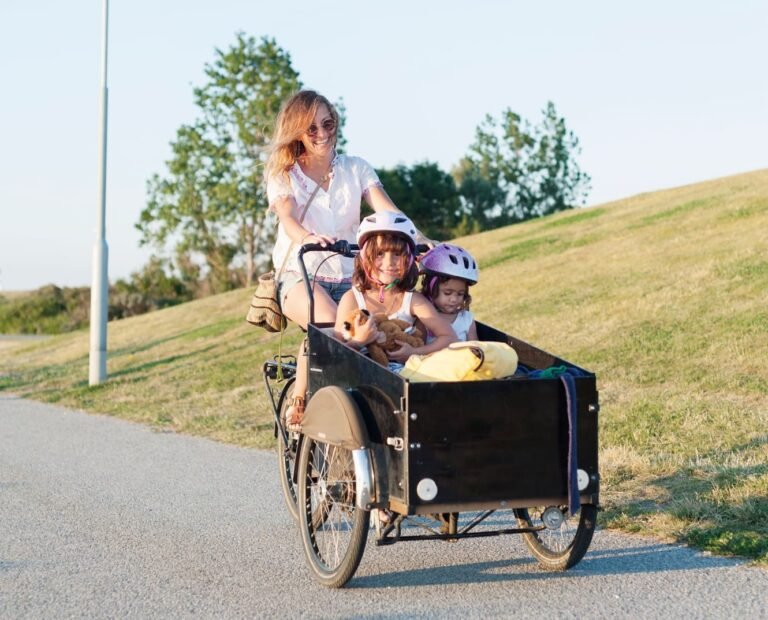Bakfietsen zijn gebouwd voor praktisch gebruik – het vervoeren van kinderen, boodschappen, gereedschap of vracht – en hebben een frame nodig dat zware lasten dag in dag uit aankan. De keuze van het juiste framemateriaal heeft invloed op het gewicht, de sterkte, de duurzaamheid en zelfs de rijeigenschappen van een bakfiets. In de fietsindustrie worden verschillende materialen gebruikt, waaronder staal, aluminium, koolstofvezel en titanium. Dit artikel legt uit waarom. 6061-T6 aluminium onderscheidt zich als de optimale keuze voor bakfiets frames. We vergelijken 6061-T6 aluminium met chromolystaal, koolstofvezel en titanium, en behandelen daarbij in heldere taal belangrijke concepten zoals vloeigrens, vermoeiingsweerstand, corrosiebestendigheid en maakbaarheid. Het doel is een evenwichtige uitleg – over de 70%, een consumentvriendelijke discussie en de technische inzichten van de 30% – zodat zowel gewone fietsers als technisch onderlegde lezers de voordelen kunnen begrijpen. (Voor een algemene inleiding tot bakfietsen en hun kenmerken, zie de handleiding van de Regen "Wat is een bakfiets?(voor achtergrond.)
Veelvoorkomende framematerialen voor bakfietsen
Voordat we ons op 6061-T6 aluminium richten, kijken we kort naar de belangrijkste materialen die voor bakfietsframes worden gebruikt en wat ze te bieden hebben:
Chromolystaal (gelegeerd staal)
Staal is al meer dan een eeuw een klassieke keuze voor fietsen. De meeste hoogwaardige fietsstalen zijn chromoly (chroom-molybdeen gelegeerd staal, bijv. 4130). Staal staat bekend om zijn sterkte en duurzaamheid en zorgt vaak voor een soepele rit omdat het materiaal licht kan buigen en trillingen van de weg kan absorberen. Voor longtail- of zware bakfietsen maken de veerkracht en taaiheid van staal het een populaire optie. Een voordeel van staal is dat als een frame scheurt of buigt, het vaak gerepareerd kan worden door te lassen of solderen, wat handig is voor intensief gebruik of in afgelegen gebieden. Stalen fietsframes kunnen letterlijk tientallen jaren meegaan als ze goed onderhouden worden. Staal is echter zwaarder dan andere materialen – ongeveer 2,5 tot 3 keer dichter dan aluminium. Een stalen bakfietsframe dat met dezelfde sterkte is gebouwd als een aluminium frame, weegt over het algemeen meer. Staal kan ook roesten als de lak afbladdert of als het na verloop van tijd aan vocht wordt blootgesteld. In natte klimaten of bij winterse strooizoutomstandigheden vereisen stalen frames zorgvuldig onderhoud of coatings om corrosie te voorkomen. Moderne chromolystalen frames verminderen het gewicht met butted tubing (dunner in het midden, dikker aan de uiteinden) om massa te besparen zonder aan sterkte in te boeten. Toch zijn het gewicht en de roestgevoeligheid van staal nadelen voor bakfietsen die buiten kunnen staan of vaak in de regen worden gebruikt.
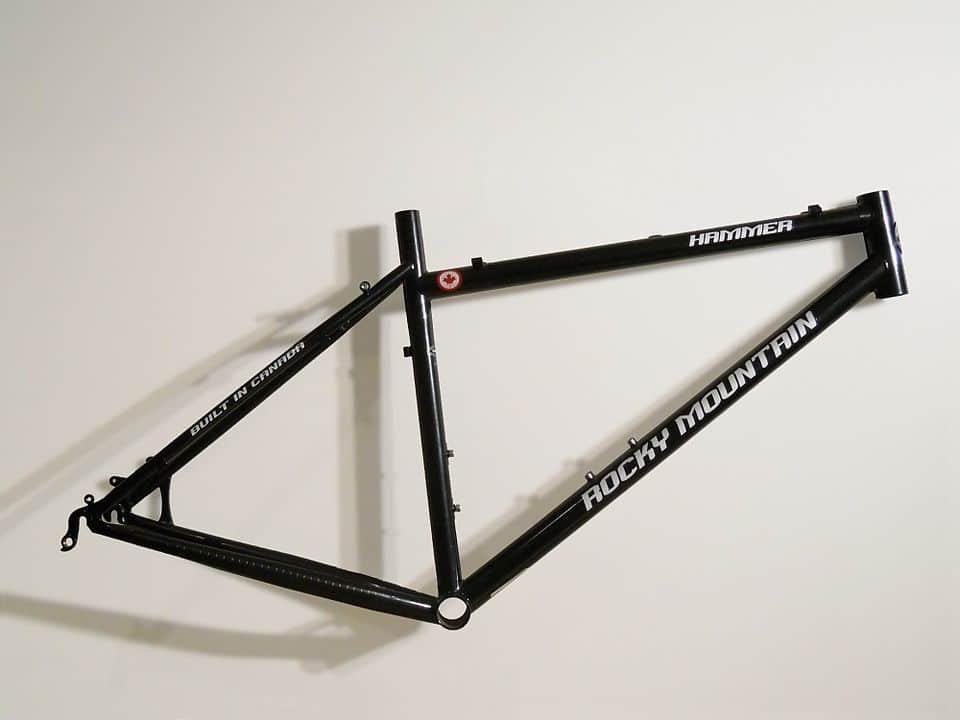
6061-T6 aluminium (en andere legeringen)
Aluminium is uitgegroeid tot het werkpaard van de moderne fietsindustrie, inclusief bakfietsen. 6061-T6 aluminium is namelijk het meest gebruikte materiaal voor fietsframes vandaag de dag . Frames van aluminiumlegering zijn in populariteit gestegen omdat ze lichtgewicht (ongeveer een derde van de dichtheid van staal) en roestbestendigEen frame van 6061 aluminium kan veel lichter worden gemaakt dan een stalen frame zonder al te veel in te leveren op sterkte, wat een groot voordeel is bij een bakfiets die al 25 tot 40 kg weegt vóór de lading. Aluminium roest niet – het vormt van nature een dunne oxidelaag die het beschermt tegen verdere corrosie. Dit maakt aluminium frames ideaal voor vochtige of regenachtige klimaten en winterse omstandigheden waar staal mogelijk te lijden heeft; zoals een branchegids opmerkt: “Als u in een vochtig klimaat woont, is aluminium wellicht de betere keuze” Bakfietsen worden vaak buiten gebruikt, dus een aluminium frame betekent dat u zich minder zorgen hoeft te maken over corrosie op de lange termijn.
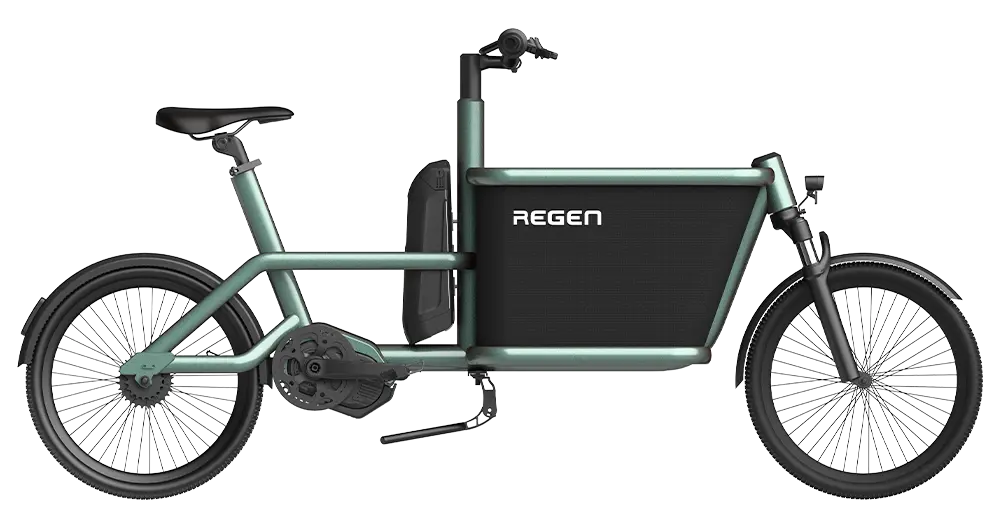
Regen 02 E-bakfiets
Bent u op zoek naar een compacte, aanpasbare voorlader voor uw merk?
TÜV-getest door middel van eerdere maatwerkprojecten. Openbaar beschikbaar model: configureerbaar, bewezen en klaar voor schaalbaarheid.
Samenstelling van aluminiumlegering 6061 naar massa:
| Bestanddeel element | Minimum (% op gewicht) | Maximaal (% op gewicht) |
| Al | 95.85% | 98.56% |
| Mg | 0.80% | 1.20% |
| Si | 0.40% | 0.80% |
| Fe | 0 | 0.70% |
| Cu | 0.15% | 0.40% |
| Kreeft | 0.04% | 0.35% |
| Zink | 0 | 0.25% |
| Ti | 0 | 0.15% |
| Mijn | 0 | 0.15% |
| (anderen) | 0 | 0,15% totaal (elk 0,05%) |
Aluminium frames staan er ook om bekend dat ze stijf en responsief. In de praktijk betekent dit dat een bakfiets met een aluminium frame minder buigt onder belasting, wat kan bijdragen aan een stabiele wegligging bij het vervoeren van zware lading. Die stijfheid kan zich echter vertalen in een ruwere rit op ruwe wegen in vergelijking met staal. Aluminium als materiaal heeft een lager trillingsdempend vermogen – staal is tot 100x beter in het absorberen van trillingen dan aluminium – waardoor kleine oneffenheden meer voelbaar kunnen zijn op een aluminium frame. Fabrikanten pakken dit aan door het frameontwerp (buisvormen, wanddikte) en door verende voorvorken of brede banden in bakfietsen te gebruiken om het comfort te verbeteren. Het lichtere gewicht van aluminium heeft als nadeel dat het stijver kan aanvoelen.
Het is belangrijk om te vermelden dat er ook andere aluminiumlegeringen zoals 7005 in fietsen worden gebruikt. 7005-T6 aluminium is iets sterker dan 6061-T6 (door de toevoeging van zink), maar iets zwaarder en duurder. Veel fabrikanten van bakfietsen houden vast aan 6061-T6 omdat het een uitstekende balans biedt tussen sterkte, gewicht, kosten en gebruiksgemak. In de volgende sectie gaan we dieper in op de eigenschappen van 6061-T6, aangezien dit onze focus is voor "beste materiaal".
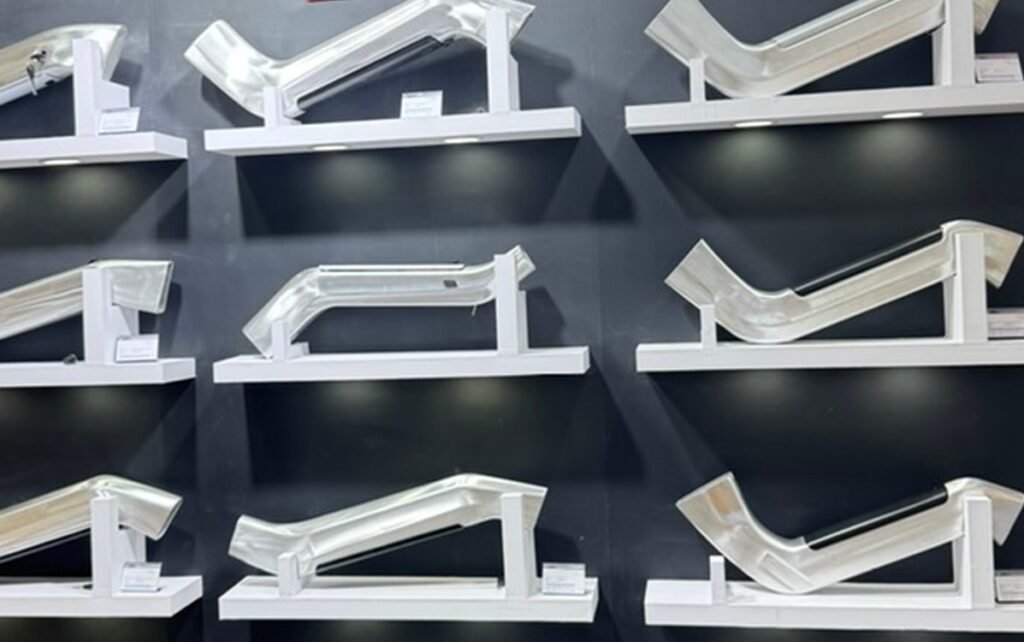
Koolstofvezel
Koolstofvezel is een hoogwaardig framemateriaal dat vooral wordt gebruikt in racefietsen of high-end fietsen. Het is een heel ander soort materiaal – geen metaal, maar een composiet van koolstofvezels ingebed in hars. Carbon frames worden gewaardeerd om hun hoge kwaliteit. extreem lichtgewicht en bieden een zeer hoge sterkte-gewichtsverhouding. Ze kunnen ook zo ontworpen worden dat ze trillingen goed absorberen, wat zorgt voor een soepele rit, door de vezellagen zo te oriënteren dat ze schokken dempen. In theorie zou carbon een zeer licht bakfietsframe kunnen opleveren. Carbonvezel heeft echter een aantal serieuze beperkingen voor bakfietsen: het is duur en minder duurzaam bij impact of ruw gebruik. Een carbonframe kan zeer sterk zijn bij normaal gebruik, maar als het scheurt door een val of door erin te boren, kan het plotseling bezwijken. Bij een intensief gebruikte gebruiksfiets die tegen een stootje kan, is dit een punt van zorg. Zoals een artikel in de branche opmerkt: “Frames van koolstofvezel zijn over het algemeen het duurst en kunnen minder duurzaam zijn bij een impact, wat een risico kan vormen in situaties waarin bakfietsen vaak worden gebruikt.” Met andere woorden, carbon is fantastisch om gewicht te besparen, maar voor een fiets die dagelijks betrouwbaar zware lasten moet dragen (en misschien af en toe omvalt of ergens tegenaan stoot), wordt carbonvezel vaak gezien als te kwetsbaar en duur. Bovendien is het lastig om accessoires of dozen aan een carbonframe te bevestigen – je kunt er niet zomaar nieuwe brackets of braze-ons op lassen zoals je dat met metaal wel kon. Om deze redenen is carbonvezel zeldzaam in de bakfietswereld (misschien alleen te vinden in een paar zeer dure modellen). De meeste bakfietsen geven prioriteit aan duurzaamheid en stevigheid boven ultralichte prestaties, en dat speelt in op de sterke punten van aluminium.

Titanium
Titanium wordt vaak beschouwd als het "droom"materiaal voor fietsframes. Het is een metaal dat lichtgewicht (ongeveer 40% lichter dan staal qua volume, dichtheid ~4,5 g/cc), extreem corrosiebestendig (het roest helemaal niet) en is erg sterk. Een goed gemaakt titanium frame kan een leven lang meegaan. Het heeft ook vergelijkbare rijeigenschappen als staal – een beetje flex voor comfort – terwijl het qua gewicht dichter bij aluminium ligt. Dus waarom zijn niet alle bakfietsen van titanium gemaakt? In één woord: kosten. Titanium is veel duurder en moeilijker om mee te werken. Het materiaal zelf is kostbaar (een bron vermeldt Titanium van klasse 9 is ruim 23x duurder dan aluminium van klasse 6061-T6 door grondstofprijs), en de fabricage vereist gespecialiseerde lastechnieken (vaak in een inert gasomgeving). Titanium frames worden vanwege deze kosten meestal alleen gevonden op high-end custom bikes. Voor een bakfiets, wat een gebruiksvoorwerp is, zou een titanium frame de prijs erg hoog opdrijven, wat voor de meeste rijders of fleetkopers moeilijk te rechtvaardigen is. Degenen die wel voor titanium kiezen, willen meestal een "fiets voor het leven" en zijn bereid daar een premie voor te betalen. Qua prestaties zou titanium een uitstekend bakfietsframe kunnen opleveren (sterk, geen roest, redelijk licht, met een beetje flex), maar aangezien het een orde van grootte meer kan kosten dan aluminium, blijft het een nichekeuze. Staal en aluminium domineren de markt omdat ze veel betaalbaarder zijn. Titanium deelt ook het voordeel van staal dat het vergevingsgezinder is - het kan meer buigen en vervormen zonder te breken (hoge rek), daarom worden stalen en titanium frames vaak aanbevolen voor zeer grote rijders. Voor de meeste mensen wegen de voordelen van titanium echter niet op tegen het enorme prijsverschil, terwijl aluminium vrijwel dezelfde sterkte-gewichtsverhouding biedt voor een fractie van de prijs.
Nu we het landschap hebben onderzocht, gaan we dieper in op de vraag waarom 6061-T6 aluminium is met name geschikt als materiaal voor bakfietsframes, omdat het veel van de hierboven besproken factoren in evenwicht brengt.
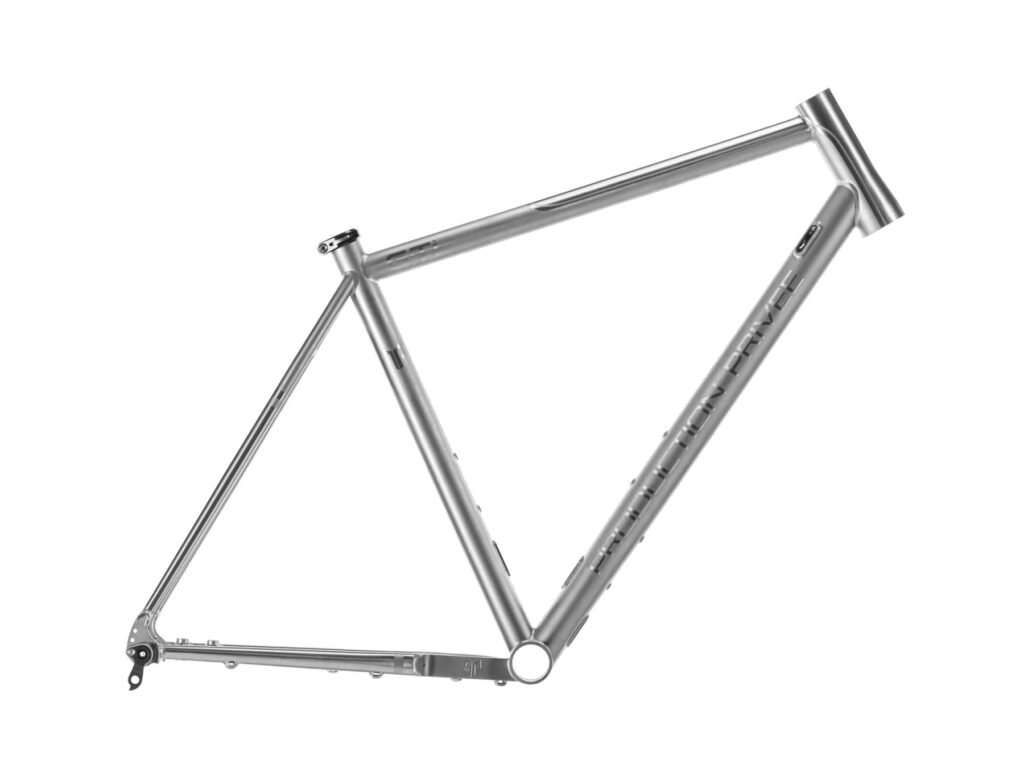
Het argument voor 6061-T6 aluminium
6061 aluminiumlegering (warmtebehandeld tot T6-harding) wordt soms ook wel "vliegtuigkwaliteit" aluminium genoemd – het wordt gebruikt in vliegtuigen, auto-onderdelen en talloze structurele toepassingen. Voor bakfietsen is 6061-T6 een ideale keuze. sterkte, gewicht, duurzaamheid en kostenHieronder bekijken we een aantal specifieke eigenschappen om te begrijpen waarom 6061-T6 aluminium zo geschikt is voor de eisen van bakfietsen:
Sterkte-gewichtsverhouding
Een van de grootste redenen waarom aluminium (met name 6061-T6) de voorkeur krijgt, is uitstekende sterkte-gewichtsverhouding. Dit betekent dat het, gezien hoe licht het is, behoorlijk sterk is. Laten we wat cijfers in perspectief plaatsen: 6061-T6 aluminium heeft een vloeigrens in de orde van ~250 MPa (megapascal) en een treksterkte van ongeveer 310 MPa (dit zijn typische waarden voor de T6-harding). Ondertussen kan een hoogwaardig staal zoals 4130 chromoly een vloeigrens hebben van ~450–600 MPa en een treksterkte van 700–900 MPa. Op papier is staal in absolute termen sterker, maar onthoud de dichtheid: staal is ongeveer 3 keer zwaarder in volume. Als je twee buizen van dezelfde afmetingen neemt, kan de stalen buis meer spanning verdragen voordat hij buigt, maar hij weegt drie keer zoveel. De aluminium buis is lichter en je kunt een grotere of dikkere buis gebruiken om de sterkte te vergroten en toch lichter te worden dan het stalen frame. Dit is precies wat fietsontwerpers doen: aluminium frames gebruiken oversized buizen – grotere diameters of dikkere wanden – om sterkte en stijfheid te garanderen, en zelfs na een beetje "overbouwen" is het framegewicht lager dan dat van staal. Een bakfietsingenieur legt bijvoorbeeld uit dat aluminium qua doorsnede niet zo sterk is als staal, “er zijn grotere buizen nodig om te garanderen dat ze aan dezelfde normen voldoen bij vernietigingstesten”, terwijl staal buizen met een kleinere diameter kan gebruiken. Het resultaat is een aluminium frame dat aan de vereiste sterkte voldoet, maar met grotere buisprofielen. Gelukkig is het verschil in dichtheid zo groot dat zelfs met grotere buizen een aluminium frame meestal aanzienlijk lichter is dan een stalen frame.
Gewicht is op verschillende manieren van belang voor een bakfiets. De fiets begint vaak zwaar (modellen met elektrische ondersteuning kunnen wel 30 tot 40+ kg wegen) en je voegt er misschien wel 50 tot 100 kg aan bagage of passagiers aan toe. Een lichter frame maakt het trappen makkelijker (of ontlast de motor en accu van een e-bakfiets) en is gemakkelijker te hanteren bij het tillen of manoeuvreren van de fiets zonder lading. Elke kilo die je bespaart op het frame is een extra kilo aan lading die je kunt meenemen voor hetzelfde totale gewicht, of gewoon minder belasting voor de berijder. Door een lichtgewicht materiaal zoals 6061-T6 aluminium te gebruiken, kunnen ontwerpers het basisgewicht van de bakfiets dus beheersbaar houden, zonder dat dit ten koste gaat van de sterkte.
Het is geen verrassing dat veel toonaangevende fabrikanten van bakfietsen om deze reden aluminiumlegering gebruiken. Zo bouwt het bekende Nederlandse merk Urban Arrow hun e-cargofietsen met voorlader en een frame van 6061-T6 aluminium. Daardoor blijft de fiets ondanks zijn grote formaat wendbaar en niet te zwaar, en kan hij een lading vervoeren. laadvermogen tot 125 kg in de frontbox (plus rijder) – hun 6061-T6 frame is in feite geschikt voor een totaal brutogewicht van 250 kg inclusief fiets, berijder en vracht. Dit praktijkvoorbeeld laat zien dat 6061 aluminium, mits goed ontworpen, meer dan sterk genoeg is voor zware ladingen. De frames zijn vaak ontworpen met een ruime veiligheidsmarge of "overgedimensioneerd" voor extra stevigheid, zodat ze zelfs onder de meest uitdagende omstandigheden niet buigen of breken. Kortom, 6061-T6 aluminium maakt het mogelijk om bakfietsen te vervoeren. sterk zonder ondraaglijk zwaar te worden, waardoor er een ideale balans ontstaat qua draagkracht.

Regen 02 E-bakfiets
Bent u op zoek naar een compacte, aanpasbare voorlader voor uw merk?
TÜV-getest door middel van eerdere maatwerkprojecten. Openbaar beschikbaar model: configureerbaar, bewezen en klaar voor schaalbaarheid.
Vermoeidheidsweerstand en duurzaamheid
Een cruciaal aspect voor elk fietsframe is hoe het reageert vermoeidheid – de geleidelijke verzwakking van materiaal onder herhaalde belastingscycli. Elke keer dat u een hobbel raakt of hard trapt, komt het frame onder spanning te staan. Na jarenlang gebruik kunnen deze cycli kleine scheurtjes veroorzaken die groter worden. Materialen verschillen in hoe ze omgaan met vermoeiing. Staal en titanium hebben een eigenschap die 'vermoeiing' wordt genoemd. uithoudingsvermogenslimiet: als de spanning onder een bepaalde drempelwaarde ligt, kan het materiaal theoretisch oneindig veel cycli doorstaan zonder te falen. Aluminiumlegeringen hebben geen duidelijke uithoudingsvermogensgrens, wat betekent dat zelfs kleine, herhaalde spanningen over een zeer lange tijd schade kunnen veroorzaken. In de praktijk betekent dit dat een aluminium frame een beperkte vermoeiingslevensduur heeft – maar die levensduur kan zeer lang zijn als het frame is ontworpen om de spanningen laag te houden. Ingenieurs voorkomen vermoeiingsbreuk in aluminium door overbouw Gebieden met hoge belasting en zorgen ervoor dat de verwachte belasting ruim binnen het framegewicht valt. Zoals eerder vermeld, ontwerpen bedrijven zoals Urban Arrow hun 6061-T6-frames expliciet met extra sterkte voor veiligheid en een lange levensduur. Door dikkere buiswanden of verstevigingen bij kritieke verbindingen te gebruiken, houden ze de belasting per cyclus lager, waardoor het frame jarenlang intensief gebruikt kan worden. Veel moderne aluminium bakfietsen worden bovendien getest volgens strenge normen (zoals de nieuwe Europese veiligheidsnorm voor bakfietsen EN 17860) om te garanderen dat ze tienduizenden cycli met zware belasting doorstaan.
Het is vermeldenswaard dat eerdere generaties aluminium fietsframes (bijvoorbeeld in de jaren 90) een reputatie hadden voor scheuren – deels omdat ze zeer licht waren ontworpen en niet altijd rekening hielden met langdurige vermoeidheid. De huidige 6061-T6 aluminium frames zijn aanzienlijk verbeterd. Zoals een fietsingenieur het verwoordde: aluminium frames zijn geëvolueerd van overdreven flexibele "natte noedels" of overdreven stijve, scheurgevoelige ontwerpen naar moderne “lichtgewicht, grote diameter, dunwandige buizen” die een goede balans bieden tussen prestaties en duurzaamheid. Fabrikanten hebben veel geleerd over het verminderen van spanningsverhogers (scherpe hoeken of lassen die spanning concentreren) en over het correct warmtebehandelen van frames na het lassen. Als het goed wordt gedaan, kan een 6061-T6-frame jarenlang intensief worden gebruikt. Staalfans beweren vaak dat staal "langer meegaat" vanwege de vermoeiingsgrens, maar in de praktijk is de levensduur van een goed gemaakt aluminium frame uitstekend voor het beoogde gebruik. En als een frame buiten het ontwerp wordt misbruikt (bijv. enorme sprongen of crashes), kan elk materiaal falen – staal kan buigen in plaats van scheuren, terwijl aluminium kan scheuren, maar een gebogen frame kan ook onberijdbaar zijn.
Voor bakfietsen is een ander aspect van duurzaamheid: slagvastheid – hobbels, stoten of zelfs het omvallen van de fiets. Aluminium is een redelijk ductiel metaal (niet broos), maar onder extreme kracht zal het eerder barsten dan vervormen zoals staal. Dit betekent dat als je een bakfiets hard crasht, een stalen frame kan deuken of buigen, terwijl een aluminium frame kan breken bij een las. De robuuste ontwerpen van bakfietsen (met toegevoegd materiaal op belangrijke plekken) maken ernstige frameschade echter zeldzaam. Bovendien hebben veel bakfietsen een extra structuur (zoals een houten of plastic bak die op het frame is gemonteerd) die de zwaarste klappen kan opvangen in plaats van het frame zelf. In alledaagse termen is een 6061-T6 aluminium frame duurzaam genoeg om de ontberingen van stadsbakfietsen aan te kunnen - kuilen, stoepranden en incidentele kleine ongelukjes - vooral in combinatie met een goed ontwerp dat spanningsconcentraties vermijdt. De afwezigheid van roest (hierna besproken) draagt ook bij aan de duurzaamheid op lange termijn, omdat het materiaal niet stilletjes van binnenuit verzwakt.
Corrosiebestendigheid
Iedereen die ooit een oudere auto of fiets heeft gehad in een vochtig klimaat, weet hoe erg roest kan zijn. Corrosiebestendigheid is een groot pluspunt van aluminium in bakfietsen. Aluminium "roest" niet zoals staal – het vormt geen schilferige rode oxidelaag die het metaal aantast. In plaats daarvan vormt aluminium vrijwel direct een dunne oxidelaag op het oppervlak wanneer het wordt blootgesteld aan lucht, en deze laag beschermt het onderliggende metaal tegen verdere corrosie. In de praktijk kan een frame van 6061 aluminium ruw (ongeschilderd) blijven en zal het alleen een doffe oxidepatina ontwikkelen, geen structurele roest. De meeste aluminium frames worden geverfd of gepoedercoat voor de esthetiek, maar als die verf eraf krast, krijg je niet hetzelfde soort sluipende roest als bij staal. Dit is enorm voordelig voor bakfietsen, die vaak dagelijks buitenshuis worden gebruikt.
Denk aan een bakfiets voor het gezin die geparkeerd staat voor een café in het regenachtige Seattle, of een bakfiets die door de zoute winterstraten van Montreal rijdt – een stalen frame kan onder die omstandigheden gaan corroderen bij de verbindingen of waar water zich verzamelt, tenzij het zorgvuldig wordt behandeld. Een aluminium frame kan dat veel beter verdragen. Een expert van REI's fietsadvies merkt op dat staal weliswaar goed tegen spanning kan, “Staal zal sneller oxideren (roesten) dan aluminium”, dus in een vochtig klimaat is aluminium waarschijnlijk de betere keuze voor een lange levensduur. Veel fabrikanten passen ook toe ED-coating (elektroforetische depositiecoating, een soort roestwerende primer) en robuuste verfafwerkingen op aluminium frames om er verder voor te zorgen dat de elementen geen problemen veroorzaken. (Interessant genoeg is ED-coating belangrijker voor staal, maar sommige bedrijven passen het ook toe op aluminium onderdelen voor een gelijkmatige hechting van de verf en extra bescherming.) Kortom: 6061-T6 aluminium frames zijn in wezen onderhoudsvrij qua corrosie – je hoeft je geen zorgen te maken over roest aan de binnenkant van de buizen of blaren op de lak door onzichtbare corrosie. Dit is een belangrijk voordeel als je de fiets het hele jaar door gebruikt, buiten stalt of in kustgebieden met zoute lucht.
Een regionaal voorbeeld: in Noord-Europa (denk aan Amsterdam of Kopenhagen) zijn bakfietsen enorm populair en staan ze vaak buiten. Deze regio's zijn regenachtig en soms dicht bij de zee. Aluminium bakfietsen, zoals de modellen met een 6061-T6 frame van Urban Arrow, zijn mede populair geworden omdat ze deze omstandigheden met minimale corrosieproblemen verdragen. Oudere Nederlandse bakfietsen van staal (hoewel nog steeds erg populair) moeten daarentegen regelmatig worden overgespoten of met antiroestspray aan de binnenkant van de buizen worden behandeld om roest te voorkomen, vooral wanneer ze in de buurt van de kust worden gebruikt. In veel Noord-Amerikaanse steden is strooizout in de winter een ware vloek voor fietsen, maar een aluminium frame is veel beter bestand tegen zout en smeltende sneeuw dan een stalen frame. Dus, de weerbestendigheid van 6061 aluminium biedt deze fiets een praktisch voordeel voor bakfietsen die in alle seizoenen als betrouwbaar dagelijks vervoermiddel moeten fungeren.
Stijfheid en rijcomfort
Kader stijfheid is een tweesnijdend zwaard. Een stijf frame betekent een efficiëntere krachtoverbrenging (minder energieverlies door buiging) en vaak een preciezere besturing, wat gunstig kan zijn bij het vervoeren van zware lasten die je niet wilt laten slingeren. Aan de andere kant kan een zeer stijf frame schokkerig aanvoelen op ruwe wegen, omdat het hobbels niet absorbeert – de rijder voelt ze. Aluminium heeft een lagere Young's modulus (~69 GPa) dan staal (~200 GPa), wat eigenlijk betekent dat aluminium minder stijf dan staal voor dezelfde vormMaar omdat aluminium frames buizen met een grotere diameter gebruiken (zoals eerder besproken) voor stevigheid, maken die grote buizen het frame uiteindelijk ook behoorlijk stijf. Sterker nog, een goed gebouwde aluminium bakfiets is meestal stijver dan een vergelijkbare stalen buis, simpelweg omdat je oversized buizen hebt met een materiaal dat nog steeds redelijk stijf is.
Voor een bakfiets is framestijfheid over het algemeen tot op zekere hoogte wenselijk: als je 100 kg aan bagage hebt, wil je niet dat het frame als een noedel doorbuigt – dat kan het sturen stroef of zelfs gevaarlijk maken. De "superieure wendbaarheid" van de Urban Arrow bakfiets is bijvoorbeeld deels te danken aan zijn stijf aluminium frame Dit helpt om zware lasten te dragen zonder dat het frame gaat torsen. Fietsers geven vaak aan dat aluminium bakfietsen zeer stabiel aanvoelen onder belasting. Stalen frames, met hun kleinere buizendiameter, kunnen soms wat flex vertonen bij zware belasting (stel je voor dat de achterkant van een bakfiets met lange staart lichtjes wiebelt onder een zware belasting – staal laat die flex mogelijk meer toe, terwijl een stevig aluminium frame dit zal weerstaan).
Echter, tijdens het rijden gelost Of het nu op hobbelig terrein is, diezelfde stijfheid kan de rit juist ruwer maken. Het frame geeft minder natuurlijke "mee" om trillingen te absorberen. Stalen en titanium frames staan erom bekend een meer "meegevend" rijgevoel te hebben – ze buigen lichtjes mee en dempen schokken, wat bijdraagt aan het comfort. Aluminium stond bij traditionele fietsen bekend als "hard" of "klapperig" op ruwe wegen, vergeleken met het veerkrachtige gevoel van staal. Bij bakfietsen wordt dit verschil verzacht door een paar factoren:
- Bakfietsen gebruiken vaak bredere banden werken met een lagere luchtdruk, waardoor hobbels worden geabsorbeerd (en dus als primaire vering fungeren).
- Veel bakfietsen, vooral de bakfietsen met voorlader, maken gebruik van een vorm van voorvorkvering of een verende zadelpen om het comfort te verbeteren.
- Het extra gewicht van de lading kan trillingen dempen: een beladen bakfiets rijdt zelfs soepeler dan een lege bakfiets, omdat het gewicht helpt schokken te absorberen.
Bovendien kan een modern aluminium frameontwerp het rijgevoel tot op zekere hoogte beïnvloeden. Fabrikanten gebruiken taps toelopende of gevormde buizen en soms strategische verdunning van de wanden om waar nodig wat flexibiliteit te creëren. Aluminium kan de interne demping van staal niet evenaren (de microscopische kristalstructuur van staal voert trillingsenergie beter af, wat tot wel 100x betere demping oplevert, zoals opgemerkt), maar ontwerpaanpassingen en accessoires kunnen dit compenseren.
Over het algemeen, voor de functie van een bakfietsEen stijver frame is vaak een goede zaak – het behoudt een stabiele geometrie onder belasting. De iets stuggere rijervaring van aluminium is een compromis dat te overzien is. Als comfort een belangrijke zorg is, kun je altijd staal gebruiken vanwege de soepelheid, maar accepteer dan wel de gewichts- en roestproblemen. Veel fabrikanten van bakfietsen vinden dat De voordelen van de stijfheid van aluminium voor zwaar transport wegen op tegen het comfortnadeel, vooral in combinatie met andere comfortkenmerken (dikke banden, enz.). En inderdaad, een groot deel van de bakfietsmarkt is om die reden overgestapt op aluminium frames. Een artikel op Medium over bakfietsen met lange staart merkte op dat ongeveer 35% van de bakfietsen (vooral de lichtere modellen en e-bakfietsen) van aluminium zijn, tegenover ~40% staal, wat aangeeft hoe populair aluminium is geworden vanwege de voordelen op het gebied van handling en gewicht.
Maakbaarheid en kosten
Een andere pijler van de status van 6061-T6 aluminium als "beste materiaal" is de goede werking ervan vanuit productie- en kostenoogpunt. Fietsframes moeten tot buizen worden gevormd, aan elkaar worden gelast en tegen een redelijke prijs voor de consument worden geproduceerd. Dit is hoe 6061 uitblinkt:
- Gemakkelijk te vervaardigen: 6061 aluminium is relatief eenvoudig te bewerken met behulp van standaard fietsproductieprocessen. Het kan worden geëxtrudeerd tot buizen van verschillende vormen, gebogen en gebutst (met variabele diktes langs de buis). gemakkelijk te lassen (meestal TIG-gelast) om buizen te verbinden. Een groot voordeel dat door professionals in de industrie wordt genoemd, is dat aluminium zeer veelzijdig in vormgeving – het kan gemakkelijker hydrogevormd of mechanisch gevormd worden tot complexe buisprofielen dan staal of titanium. We zien dit terug in veel moderne aluminium fietsen: vloeiende of hydrogevormde buisvormen die zeer moeilijk te realiseren zouden zijn in staal zonder dure nokken of gietstukken. Deze flexibiliteit stelt ontwerpers in staat om de framegeometrie en -sterkte te optimaliseren (bijvoorbeeld door een buis af te vlakken om meer ruimte te creëren voor lading of door geïntegreerde bevestigingspunten te creëren). Staal kan ook gevormd worden, maar vereist vaak arbeidsintensievere methoden voor complexe vormen. Koolstofvezel daarentegen kan in elke gewenste vorm gegoten worden, maar vereist dure mallen en handmatige lay-up – prima voor grote series high-end fietsen, maar niet kosteneffectief voor gebruiksfietsen in een gemiddelde productie.
- Lassen en verbinden: Bijna alle fietsframes die geen carbon zijn, worden tegenwoordig gelast (TIG-lassen is gebruikelijk). Aluminium lassen vereist meer vaardigheid en de juiste techniek (en de juiste lasstaven), maar het is goed begrepen in de fietsindustrie. 6061-T6 heeft wel een kanttekening: lassen maakt de warmtebehandelde delen zachter (de T6-hardheid gaat gedeeltelijk verloren in de warmtebeïnvloede zone). Om de volledige sterkte terug te krijgen, moeten fabrikanten doorgaans een verouderingsverhardende warmtebehandeling Na het lassen – in principe wordt het hele frame opnieuw verhit in een oven en vervolgens verouderd om de T6-eigenschappen te herstellen. Grote bedrijven hebben dit proces onder de knie als onderdeel van de productie. Sommige andere aluminiumlegeringen, zoals 7005, kunnen bijna hun volledige sterkte bereiken zonder warmtebehandeling na het lassen (ze verharden na verloop van tijd bij kamertemperatuur), maar 6061 vereist de extra stap. Zelfs met die stap is de productie van aluminium frames op grote schaal behoorlijk efficiënt. Geautomatiseerde lasmachines of bekwame lassers in productiefaciliteiten kunnen duizenden aluminium frames produceren. De extra warmtebehandeling brengt kosten met zich mee, maar is niet onoverkomelijk wanneer het in batches wordt gedaan. Het eindresultaat is een consistent sterk frame. Voor stalen frames is lassen of solderen misschien eenvoudiger (geen warmtebehandeling achteraf nodig als de eigenschappen van het staal na het lassen goed zijn). Daarom zijn kleine bouwers op maat dol op staal – je kunt een frame in een garage lassen met een eenvoudige TIG- of soldeeropstelling. Maar voor grootschalige productie wegen de voordelen van aluminium (lichtgewicht en vervormbaarheid) vaak op tegen de extra stap van warmtebehandeling.
- Kosteneffectiviteit: Aluminium frames zijn over het algemeen kosteneffectiever dan carbon- of titaniumframes. De materiaalkosten van aluminium zijn per kilo hoger dan die van gewoon staal, maar omdat er minder nodig is voor een licht frame en omdat de productie sterk geautomatiseerd kan worden, zijn de uiteindelijke kosten van een aluminium fiets vaak redelijk. Sterker nog, veel instap- tot middenklassefietsen (waaronder bakfietsen en e-bikes) gebruiken aluminium frames omdat ze een goede balans vinden tussen prijs en prestatie. Uit een enquête onder fietsers bleek dat aluminium een betaalbare optie is: meer dan de helft van de respondenten gaf aan dat de belangrijkste reden dat ze een aluminium fiets kochten, de lagere prijs Vergeleken met alternatieven. Vanuit het perspectief van de fabrikant vereisen aluminium frames geen dure gereedschappen zoals koolstofvezel (waarvoor mallen nodig zijn voor elke maat/model) en het materiaal is niet exotisch zoals titanium. Aluminium maakt dus de productie van een hoogwaardig vrachtframe mogelijk. zonder Hierdoor wordt de verkoopprijs van de fiets torenhoog opgedreven. Stalen frames kunnen goedkoper zijn voor zeer eenvoudige fietsen (staal is nog steeds het goedkoopste metaal voor fietsen), maar als je rekening houdt met de noodzaak om roest te voorkomen (door middel van coatings, roestvrijstalen onderdelen) en het hogere verzendgewicht, worden de kostenverschillen kleiner. Voor bakfietsen in het midden- tot hogere segment is 6061-T6 aluminium vaak de meest economische keuze, ook als de prestaties in aanmerking worden genomen.
- Productieschaal: We moeten ook vermelden dat aluminium de voorkeur geniet van veel grote fietsbedrijven en OEM-fabrikanten. Fabrieken in Taiwan, China en elders hebben de productie van aluminium fietsframes in de loop der decennia geperfectioneerd. Dit betekent dat als een bedrijf zoals Regen, of welk merk dan ook, bakfietsen op grote schaal wil produceren, de infrastructuur voor de productie van hoogwaardige 6061-T6 aluminium frames direct beschikbaar is. Dit helpt om de doorlooptijden en kosten beheersbaar te houden. De productie van stalen frames op grote schaal is ook gebruikelijk (veel goedkopere fietsen zijn van staal), maar de productie van een echt lichtgewicht, hoogwaardig chromolystalen frame kan in werkelijkheid arbeidsintensiever zijn (er is meer handmatige afwerking, uitlijning, enz. nodig, terwijl aluminium frames vaak nauwkeurig op een mal worden gelast en warmtebehandeld voor consistente resultaten). De productie van koolstofvezel is duur, tenzij de volumes zeer hoog zijn, en de productie van titanium is alleen vanwege de kosten laag. 6061-T6 aluminium biedt dus een uitstekende balans, niet alleen qua materiaaleigenschappen, maar ook qua maakbaarheid voor de fietsindustrieHet is niet overdreven om te zeggen dat het de afgelopen jaren de opkomst van betaalbare, capabele elektrische bakfietsen mogelijk heeft gemaakt. Zonder aluminium zouden veel elektrische bakfietsen simpelweg te zwaar (bij gebruik van staal) of te duur (bij gebruik van carbon/ti) zijn om praktisch te zijn voor massale adoptie.
De voordelen op een rijtje
Als we deze factoren samenvoegen, zien we waarom 6061-T6 aluminium vaak als de beste wordt beschouwd het beste allround materiaal voor bakfietsframes: zijn licht maar toch sterk genoeg, corrosiebestendig, duurzaam met een goed ontwerp, stijf voor zware lasten, En betaalbaar om mee te werkenGeen enkel ander materiaal voldoet op dezelfde manier aan al deze eisen. Staal komt qua sterkte en prijs in de buurt, maar schiet tekort op het gebied van gewicht en corrosie. Carbon is geweldig qua gewicht, maar schiet tekort op het gebied van taaiheid en prijs. Titanium is geweldig qua prestaties, maar exorbitant in prijs. Aluminium bevindt zich in de Goldilocks-zone, waar het hoge prestaties biedt tegen een gematigde prijs – een punt dat wordt gedeeld door experts in de fietsindustrie. Zoals een ingenieur concludeerde tijdens een interview over framematerialen: rekening houdend met gewicht, sterkte, gewenste eigenschappen, maakbaarheid en zelfs duurzaamheid, “[Aluminium] is het beste materiaal dat er is” bij het maken van een complete fiets. Deze uitspraak geldt zeker voor bakfietsen, waar het materiaal alles moet doen.
Het gebruik van 6061-T6 aluminium door Regen: een praktisch voorbeeld
Om te zien hoe 6061-T6 aluminium in de praktijk werkt, laten we eens kijken naar Regen bakfietsen Bijvoorbeeld. Regen is een fabrikant en OEM/ODM-leverancier van bakfietsen en heeft 6061-T6 aluminium gebruikt voor de frameconstructie. Elk Regen bakfietsframe is gemaakt van 6061-T6 aluminiumlegering van ruimtevaartkwaliteit Om de hierboven genoemde redenen: het biedt een hoog laadvermogen zonder overmatig gewicht. Sterker nog, de ontwerpen van Regen maken gebruik van versterkte 6061-T6 frames die zware lasten (van honderden kilo's) veilig kunnen dragen. Door te kiezen voor aluminium zorgt Regen ervoor dat hun fietsen wendbaar en efficiënt blijven, zelfs met een volle lading. Dit is cruciaal voor gebruikers zoals gezinnen met kinderen of bezorgdiensten die goederen vervoeren.
RegenDe toepassing van 6061-T6 benadrukt ook een aantal praktische overwegingen: zo brengen ze geavanceerde beschermende coatings aan op hun aluminium frames (zoals ED-coating en duurzame verf) om de levensduur te verlengen. Dit betekent dat een Regen bakfiets in verschillende klimaten kan worden gebruikt – van vochtig tropisch weer tot zilte kustlucht – met minimale zorgen over framedegradatie. Regionale use cases Bevestig dit: een Regen aluminium bakfiets in een regenachtige stad in het noordwesten van de Stille Oceaan of een besneeuwde Canadese winter zal beter bestand zijn tegen de elementen dan een vergelijkbaar frame van ongecoat staal. De corrosiebestendigheid van 6061-T6 aluminium geeft gebruikers het vertrouwen dat de fiets "gebouwd is om lang mee te gaan", wat een belangrijk verkoopargument is voor gebruiksfietsen die dagelijks worden gebruikt. De frames van de Regen zijn ook ontworpen met extra materiaal op kritieke plekken (gewrichten, balhoofdbuis, bevestigingspunten voor vracht), waardoor ze effectief "over-engineered" zijn, zodat zelfs onder de meest veeleisende stedelijke vrachtscenario's de integriteit van het frame behouden blijft. Dit weerspiegelt wat andere topfabrikanten zoals Urban Arrow doen, wat onderstreept dat de consensus in de industrie is om aluminium vrachtframes iets te overbouwen voor duurzaamheid.
Een ander voordeel dat de Regen behaalt door het gebruik van 6061 aluminium is de veelzijdigheid in maatwerkAluminium frames vormen een solide basis voor diverse aangepaste configuraties en accessoires. Regen biedt klanten talloze aanpassingsmogelijkheden – en het aluminium frame maakt dit eenvoudiger. Zo kunnen frames tijdens de productie gemakkelijk worden geboord of voorzien van aangepaste bevestigingen, iets wat lastiger zou zijn bij een carbon frame. De productlijn van Regen laat zien hoe 6061-T6 aluminium verschillende bakfietsformaten (longtail, frontloader, enz.) kan ondersteunen en toch kan worden aangepast aan de behoeften van de klant. Ze lichten veel van deze mogelijkheden uit op hun website: je kunt een Regen-fiets in een aangepaste kleurstelling krijgen (Aangepaste lak voor bakfiets), kies verschillende materialen voor de laadbak of voeg merkstickers toe (Aanpassing van materiaal en stickers voor bakfietsen), configureer de modules en componenten van de fiets om ze aan te passen aan specifieke functies (Functioneel configuratiesysteem voor bakfietsen), en zelfs de branding personaliseren met stickers of logo's (Decals & Logo-aanpassing). Dit alles is mogelijk op een stevig frame van 6061-T6 aluminium, waarop gemakkelijk verf, bevestigingen en stickers kunnen worden aangebracht.
Het is belangrijk om op te merken dat onze lof voor het gebruik van 6061-T6 aluminium door Regen niet bedoeld is als promotie, maar eerder als illustratie. Veel bakfietsbedrijven wereldwijd gebruiken 6061-legering om dezelfde rationele redenen – Regen is een concreet voorbeeld, naast andere bedrijven zoals Urban Arrow (Nederland) of Xtracycle en Yuba (VS), die in sommige modellen ook zijn overgestapt op aluminium. Door te standaardiseren op 6061-T6 aluminium, sluit Regen zich aan bij de best practices in de branche om bakfietsen te leveren die sterk, licht, weerbestendig en betrouwbaar zijn voor klanten in verschillende regio's en toepassingen. Het is een bewijs van hoe goed 6061-T6 aluminium voldoet aan de reële behoeften van bakfietsers, of het nu ouders zijn die naar school gaan of bedrijven die de laatste kilometers afleveren.
Conclusie
Bakfietsen stellen unieke eisen aan hun frame: ze moeten veilig veel zwaardere lasten kunnen dragen dan een gewone fiets, maar tegelijkertijd praktisch zijn om te trappen en te hanteren. De keuze van het framemateriaal kan de bruikbaarheid van een bakfiets maken of breken. Na alle factoren te hebben onderzocht, 6061-T6 aluminium blijkt het beste materiaal voor bakfietsframes Dankzij de bijna ideale combinatie van eigenschappen voor deze toepassing. Het biedt een hoge sterkte in verhouding tot het gewicht, waardoor fietsen lichter gebouwd kunnen worden zonder dat dit ten koste gaat van de draagkracht. Mits goed ontworpen, is het bestand tegen herhaalde belastingen, wat fietsers een duurzaam en lang meegaand frame oplevert. Het is roest- en corrosiebestendig, een essentieel voordeel voor fietsen die dagelijks worden gebruikt in alle weersomstandigheden. Het biedt een stijf en stabiel platform voor het vervoeren van vracht, wat zich vertaalt in een zelfverzekerde wegligging onder belasting. Bovendien stelt het fabrikanten in staat om te innoveren en de productie op te schalen, waardoor bakfietsen betaalbaarder en beschikbaarder worden zonder in te leveren op kwaliteit.
Hoewel chromolystaal, koolstofvezel en titanium elk hun eigen voordelen hebben, haalt geen van hen de balans die 6061-T6 aluminium biedt voor bakfietsen als je kijkt naar prestaties, duurzaamheid en kosten samenStaal is sterk en comfortabel, maar te zwaar en onderhoudsgevoelig in natte omstandigheden voor veel moderne behoeften. Carbon is ultralicht en glad, maar te duur en gevoelig voor schade door de ruwe wereld van vrachtvervoer. Titanium is fantastisch, maar financieel onbereikbaar voor de meesten, vooral voor grotere vrachtframes. 6061-T6 aluminium vindt de "gulden middenweg" – het is het materiaal dat het meest voldoet, zowel voor rijders als bouwers.
Uiteindelijk is het bewijs op straat te vinden: van de bruisende Europese bakfietsprogramma's tot de groeiende markt voor e-bakfietsen in Noord-Amerika: 6061 aluminium frames worden veel gebruikt en vertrouwd. Fabrikanten zoals Regen hebben met hun producten aangetoond dat deze legering de sterkte kan leveren die nodig is. 250 kg totale belasting terwijl de fiets wendbaar en weerbestendig blijft. Zoals een ingenieur uit de industrie bondig stelde: modern aluminium (geïllustreerd door 6061-T6) is aantoonbaar het beste beschikbare materiaal Wanneer alle factoren in aanmerking worden genomen. Voor consumenten betekent dit dat ze erop kunnen vertrouwen dat een 6061-T6 aluminium bakfiets een slimme keuze is – hij is waarschijnlijk lichter op de weg, onderhoudsarmer en robuust waar het erop aankomt.
Samenvattend, 6061-T6 aluminium is de perfecte keuze voor bakfietsen, wat de robuuste, veelzijdige en gebruiksvriendelijke ontwerpen mogelijk maakt die de bakfietsrevolutie aandrijven. Het vormt echt de ruggengraat (of beter gezegd, het frame) van enkele van de beste bakfietsen ter wereld.
Referenties
- Stedelijke Pijl, “Van welk materiaal is het frame van de Urban Arrow bakfietsen gemaakt?” Urban Arrow Service Center (2025) – Urban Arrow bevestigt dat hun frames zijn gemaakt van 6061-T6 aluminium, gekozen vanwege de sterkte na warmtebehandeling. Ze benadrukken ook het ontwerpen van frames met extra sterktemarge voor duurzaamheid.
- REI Co-op Deskundig Advies, “Fietsframematerialen uitgelegd” – Bespreekt verschillende fietsframematerialen. Merkt op dat staal roest sneller dan aluminium, maar staal kan op de lange termijn beter tegen spanning (flexibiliteit) dan aluminium; in vochtige klimaten wordt aluminium verkozen om roest te voorkomen. Ook wordt vermeld dat staal en titanium meer kunnen flexen zonder te breken, wat geschikt is voor grotere rijders.
- BikePacking.com – Logan Watts, “Onze analyse van het aluminiumfietsonderzoek” (2022) – Biedt inzichten van professionals uit de industrie over aluminium versus andere materialen. Legt uit dat omdat aluminium is qua volume niet zo sterk als staal, er worden buizen met een grotere diameter gebruikt, wat aluminium frames stijver kan maken. Ook merkt de fabrikant op dat de demping van staal ongeveer 100x beter is dan die van aluminium. Een ingenieur wordt geciteerd: “Gezien het gewicht, de sterkte en de duurzaamheid is [aluminium] het beste materiaal dat er is” voor een uitgebalanceerd fietsontwerp.
- J. Material Science (wetenschappelijk tijdschrift), Vergelijkende analyse van traditioneel aluminium versus nieuwe legeringen/composiet voor fietsframes (2021) – Literatuuronderzoek geeft aan 6061-T6 is het meest voorkomende materiaal voor fietsframesHet vergelijkt aluminiumlegeringen: 7005 is iets sterker, maar dichter en duurder dan 6061. Het benadrukt ook de kosten van titanium, en merkt op Grade 9 Ti is 23× duurder dan 6061-T6 aluminium waardoor Ti voor de meeste fietsers onpraktisch is.
- Medium.com – Michael Wesonga, “Framematerialen: de beste keuze voor uw longtail bakfiets?” (2024) – Een overzicht van staal, aluminium, carbon en titanium voor bakfietsen. stalen frames (~40% van EU-bakfietsen) blijven populair vanwege hun betrouwbaarheid, terwijl aluminium (~35%) groeit, vooral voor lichtere e-cargomodellen . Opmerkingen: aluminium is lichter en roestbestendig, maar kan harder rijden. Waarschuwing: koolstofvezel is, hoewel licht, duur en minder duurzaam bij impact, niet ideaal voor intensief gebruikte vrachtscenario's. De repareerbaarheid van staal wordt genoemd als een voordeel voor intensief gebruik.
- CleverCycles (fietsenwinkel) – Specificaties Urban Arrow Family bakfiets – Geeft het frame en de capaciteit van de Urban Arrow weer. Bevestigt het framemateriaal. Aluminium 6061-T6 en toont de fiets maximaal brutogewicht 250 kg (125 kg vracht + rijder) is haalbaar met dat aluminium frame. Demonstreert de echte sterkte van 6061-T6 in een bakfiets.
- Reddit – r/CargoBike-discussie “Staal versus aluminium” (jaren 2020) – Inbreng van de community (anekdotisch) waarin wordt opgemerkt dat een goed ontworpen chromoly frame slechts ~10% zwaarder is dan een gelijkwaardig aluminium 6061 frame, en dat veel populaire bakfietsen chromoly vorken gebruiken voor extra stevigheid. aluminium kan brozer zijn in bepaalde onderdelen (zoals vorken), daarom combineren sommige fabrikanten materialen (aluminium frame met stalen vork). Dit onderstreept de ontwerpkeuzes om de sterke punten van elk materiaal te benutten (aluminium voor gewichtsbesparing in het frame, staal voor schokabsorptie in de vork).





